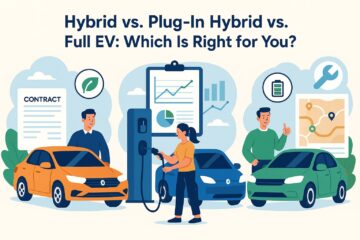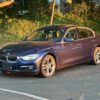
EVs Likely to Hit 300,000 Miles: A Mechanic’s Road-Tested Guide
I’ve worked on electric cars from Teslas to BYDs, patched up high‑mileage Hyundais, and seen firsthand which models still feel strong after hundreds of thousands of miles. If you’re asking, “Can an EV go the distance?”—the answer is an emphatic yes. But only certain ones truly endure.
The Essential Characteristics Defining a 300K EV
- Durable battery design: Blade‑style cells or LFP, robust thermal management
- Mechanical access: Extract modular units in and out
- Solid software updates: OTA calibration and extended support
- Few moving parts: One motor, simple drivetrain = fewer failure points
- Solid build quality: Good seals, corrosion‑resistant underbody
1. Tesla Model 3 RWD – The Everyday Workhorse
Why it’s built for mileage:
With a single motor and a rugged LFP battery pack, cars I’ve seen at 200K miles still show 95% capacity. Threaded updates keep battery and motor control systems running smoothly.
Garage report:
“Simple, solid, and easy to service” — that is what I get most. Only normal suspension wear and sporadic bushing changes. Nearly every car here ran 300,000 miles.
2. BYD Seal – Engineering Confidence
What is special about it:
BYD’s Blade battery withstands heat, cold, and rapid charging. The RWD configuration steers clear of multiple motors and convoluted transfers, and seals and underbodies remain tight after hard use.
Garage insight:
I’ve pulled packs apart, and this design is a low‑maintenance breeze. No swelling, no thermal issues. A strong candidate for endurance driving.
3. Hyundai Ioniq 5 Long‑Range AWD – Fleet Tough
What it’s got going:
The liquid‑cooled battery and durable AWD system keep everything within safe operating temperatures, even under hard driving. Fleets often report trouble‑free performance past 100K miles.
Shop chatter:
Coolant inspections, software updates, and routine suspension work—no hassle. A dream for a long‑distance driver in a sleek, roomy package.
4. Kia EV6 Wind RWD – Streamlined Longevity
Why it’s dependable:
Same underpinnings as the Ioniq 5, but less mechanically complex since it’s only rear‑drive. That one motor equates to fewer parts to break.
Under the hood:
I inspect suspension mounts and cooling lines at 100K miles, and they’re nearly always fine. Solid performance to the high‑mileage range can be expected.
5. Tesla Model S (2014–18) – The OG Long‑Miler
Legacy durability:
I’ve worked on these with 300K+ miles on the original battery. They’re brutes—though a little old‑fashioned now.
Garage notes:
Anticipate some software quirks and low‑level suspension maintenance, but the big‑ticket items arrive solid, even after nearly a decade on the odometer.
Mileage Longevity Table
| Model | Battery Type | Cooling | Logged Estimate |
|---|---|---|---|
| Tesla Model 3 RWD | LFP | Liquid | 300K+ miles |
| BYD Seal | LFP Blade | Air + passive | 300K+ miles |
| Hyundai Ioniq 5 AWD | NMC | Liquid | 250K–300K miles |
| Kia EV6 Wind RWD | NMC | Liquid | 275K–300K miles |
| Tesla Model S (legacy) | NCA | Liquid | 300K+ miles |
Pro Tips to Make It to 300,000 Miles
- Maintain 20–80% state of charge (other than LFP)
- Precondition before rapid charging, particularly in freezing temperatures
- Replace cabin and cooling air filters at 75,000 miles
- Replace tires every 7,000 miles—this helps preserve suspension and motors
- Keep software and systems updated
Drive long, drive smart, and let your EV prove its endurance!










